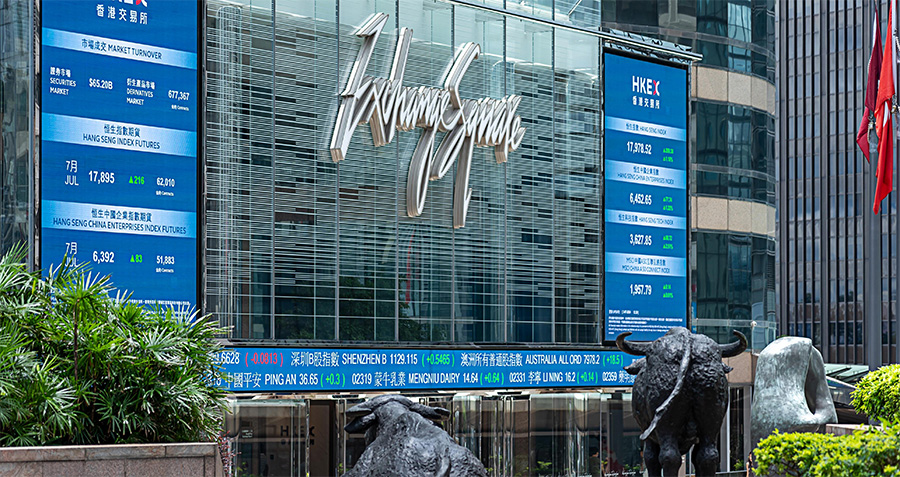By Professor Liu Jing – Professor of Accounting and Finance, Director of Investment Research Center, CKGSB
The underlying cause for the housing bubble does not lie in real estate speculation but on the structure of the sector, stemming from the local and central government’s tax-sharing system, as well as the core role that local governments play in economic development.
Since the 1980s, the role that the central and local government play in China’s economy have been clear – the central government is responsible for planning and regulation while local governments take care of implementing these regulations on a local level.
From 1980 to 2020, local government’s share in the national general public budget increased from 45.7% to 85.7% while in the same period revenue in the general public budget declined from 75.5% to 55.5%. To compensate for the gap in revenue and expenditure, local government relied on central government subsidies, debt financing and land financing.
The tax reform introduced in 1994 had a large spillover effect on land finance in the years that followed. The reforms specified that the central government would allocate all land-related taxes to local governments. This included land value tax, urban land use tax, cultivated land occupation tax, land appreciation tax, deed tax (property transfer tax), and a general property tax. Even more significant was that all the profits from land sales were transferred to local governments.
This new system gave local governments a strong incentive to increase revenue from land transfers. From 2000 to 2020, the proportion of local government land transfer revenue to total revenue increased from 5.9% to 42%. If you also take the other related land taxes into accounted, revenue from land accounted for over half (52%) of total local government revenue.
How did Land Finance Lead to Two bubbles?
Firstly, it is important to note that all land in China belongs to the government. Apart from land that is designated for organs of the state, the military, and public infrastructure, on the whole local governments can determine the land they want to allocate for industry, mining, storage, commercial services, and residential purposes.
The price of land is set by the market, however local governments can influence final prices by increasing and decreasing land supply. One of the most important means for local governments to promote local economic development is through investment.
To attract businesses to the region, local governments will often provide various tax and other economic incentives to companies looking to invest. This became common practice and led to a large decline industrial land prices. This inevitably led to less land available for commercial and residential purposes.
Investment can bring in new companies and employment opportunities, attracting an influx of people from rural areas – but it also puts pressure on housing demand, increasing residential land prices.
Price rises for residential property subsequently increased the profits local governments made from land sales and associated taxes. They then used these profits to finance the subsidies they provided to industrial enterprises.
Moving Away from Lane Finance is the Only Option to Stabilize Prices
To stabilize house prices, land finance must be reformed to solve the issue around how land is supplied. This is a very complex issue as land finance has been a fundamental resource that local governments have harnessed in the past 20 years to promote economic development. To tackle this issue, institutional changes need to be made to local governments’ financing and investment structures.
If reforms are not made to land financing, the only way to control the housing bubble is by placing limits on purchases, loans, or even through price limits. However, these administrative measures will not solve the problem that lies at the heart of the matter: the imbalance of land supply and demand.
Restrictions on purchases will have an adverse effect on consumer demand as well as aggregate demand; loan restrictions prevent lucrative projects from going ahead which could contribute to economic development; and price limits might result in a grey market, in which the market will use various methods to change the actual transaction prices in order to re-balance supply and demand.
When different cities compete for investment, it only results in a zero-sum game. It may reduce the costs for investors and increase production capacity, but at the end of the day, it is the common people who have to pay for high house prices.
In the early stages of reform and opening-up, attracting local investment brought in a large number of foreign companies to jump-start the economy, but as the economy expands and tensions with Western countries increase, operating this model is no longer sustainable.
What can be done?
To reduce the zero-sum game between cities, the first solution is to place a limit on the subsidies which local governments offer to investors. This would be similar to the OECD deal reached in 2021 to set a global minimum corporate tax rate of 15%. Countries still have the right to establish corporate tax rates for domestic enterprises, but they now have the right to raise the rates which multinationals pay to a minimum of 15%. China can implement this same practice and place limits on the incentives which local governments provide.
Secondly, local and central governments need to reorganize their responsibilities for fiscal revenue and reduce the capacity local governments have to subsidize industrial land with residential land.
A viable option would be to share land revenue between the central and local governments to reduce the local governments incentives to implement land finance. Another option would be to consider designating responsibilities for collecting deed tax, corporate tax and personal income tax to local authorities.
Not only would this increase local government funds, it would also shift their focus from investment to operations and services and pave the way for more sustainable development in the future.
This article is part of a series examining China’s property bubble. To read more, click on the articles below.






















